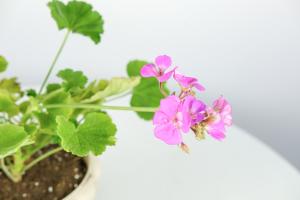Introduction
Hemp plants have been cultivated for thousands of years and have been used for a wide range of purposes. However, there is still confusion surrounding the properties and benefits of the plant. In this article, we will explore the history, characteristics, and uses of hemp plants.
History
Hemp plants have been grown for over 10,000 years in various parts of the world. Ancient civilizations like the Chinese, Egyptians, and Greeks all used hemp for various purposes such as paper, textiles, and medicine. In Europe, hemp was widely used during the Middle Ages for sails, ropes, and clothing. Even the American founding fathers, George Washington and Thomas Jefferson, grew hemp plants on their farms.
Characteristics
Hemp plants belong to the cannabis family and are a close relative to marijuana. However, unlike marijuana, hemp plants contain less than 0.3% of THC, the psychoactive compound that produces a high. Hemp plants are tall, with a height range of 6 to 15 feet. They have thin branches and palmate leaves, which are arranged symmetrically on the stem. Hemp plants are also known for their deep taproots, which can penetrate up to 6 feet deep into the soil.
Uses
There are various uses of hemp plants, including:
Textiles
Hemp fibers are strong, durable, and naturally resistant to pests, making them ideal for textile production. Hemp fabrics are soft and breathable, and they also have natural anti-bacterial properties. Hemp can be used to produce clothes, shoes, bags, and even diapers.
Paper
Hemp fibers can also be used to produce paper. Hemp paper is stronger, more durable, and produces less waste than paper made from wood pulp. Hemp paper can be used for printing books, newspapers, and other publications. It can also be used for packaging materials and stationery products.
Food and Beverages
Hemp seeds are a rich source of protein, fiber, and essential fatty acids. They can be eaten raw, roasted, or ground into a powder. Hemp seeds can be used to produce dairy-free milk, protein bars, and even beer. Additionally, hemp oil can be used for cooking and salad dressings.
Medicine
Hemp plants produce cannabinoids, such as cannabidiol (CBD), which have numerous potential health benefits. CBD has shown promise in treating epilepsy, anxiety, and chronic pain. Hemp plants are also used to produce topical creams, balms, and lotions for treating skin conditions like eczema and psoriasis.
Conclusion
Hemp plants are an incredibly versatile plant that has been used for thousands of years. From textiles to medicine, the benefits of hemp plants are numerous. With the recent legalization of hemp in many countries, interest in the plant has grown, and research into its properties and uses is ongoing. By understanding the history, characteristics, and uses of hemp plants, we can appreciate and harness the full potential of this remarkable plant.

 how many times do yo...
how many times do yo... how many planted tre...
how many planted tre... how many pine trees ...
how many pine trees ... how many pecan trees...
how many pecan trees... how many plants comp...
how many plants comp... how many plants can ...
how many plants can ... how many plants and ...
how many plants and ... how many pepper plan...
how many pepper plan...
































